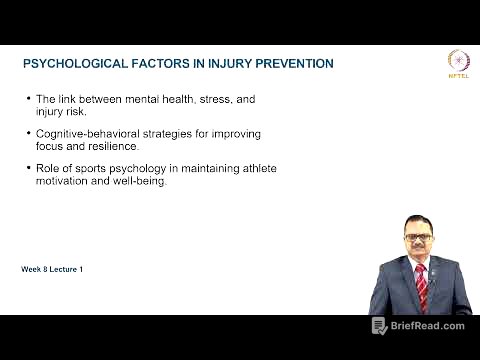TLDR;
This podcast episode of "This Week in Cardiology" covers a range of topics including listener feedback on cardiac sarcoidosis, strategies for improving outcomes in out-of-hospital cardiac arrest, the complexities of post-stent antiplatelet therapy, the utility of lipoprotein little a in predicting cardiac events, and the impact of atrial fibrillation in patients with heart failure with preserved ejection fraction (HFpEF).
- Clarification on cardiac sarcoidosis risk stratification using CMR findings.
- Importance of bystander CPR and addressing disparities in out-of-hospital cardiac arrest survival.
- Shorter durations of dual antiplatelet therapy may be more beneficial post-stent.
- Lipoprotein little a provides limited additional value in predicting cardiac events.
- Atrial fibrillation significantly worsens outcomes in HFpEF patients.
Listener Feedback on Cardiac Sarcoidosis [0:41]
Dr. Arena Candlean from Helsinki provided feedback on the discussion of cardiac sarcoidosis, emphasizing the importance of distinguishing between patients with suspected cardiac sarcoidosis versus those with biopsy-proven disease. The key difference lies in the utility of late gadolinium enhancement (LGE) patterns on cardiac MRI (CMR) for risk stratification. In patients with confirmed cardiac sarcoidosis, the degree and distribution of LGE, rather than its mere presence, are more predictive of sudden death and ventricular tachycardia (VT). Specifically, myocardial LGE constituting more than 9.9% of LV mass or affecting more than six LV segments indicates a higher risk of sudden cardiac death. This approach is similar to risk scoring in hypertrophic cardiomyopathy (HCM), where ICD implantation is considered if the 5-year risk of sudden cardiac death exceeds 6%.
Out of Hospital Cardiac Arrest [6:47]
The American Heart Association (AHA) is increasing awareness of bystander CPR with support from NFL players and teams. Resuscitation practices for out-of-hospital cardiac arrest vary geographically, with lower survival rates in communities serving Black and Hispanic areas due to factors such as lower recognition of cardiac arrest by first responders, reduced police response, and decreased defibrillation rates. Improving bystander CPR and EMS systems is crucial, as only 10% of patients with out-of-hospital cardiac arrest in the US survive, and ventricular fibrillation without CPR or AED intervention is almost universally fatal. Promoting cardiac arrest care unites communities for a universally beneficial cause.
Post Stent Antiplatlet Therapy [9:41]
The optimal duration and combination of antiplatelet therapy post-stent is complex due to the need to balance the prevention of stent thrombosis with the risk of bleeding. A South Korean 4D ACS trial compared one month versus twelve months of dual antiplatelet therapy (DAPT) with aspirin and prasugrel in patients undergoing PCI for acute coronary syndrome (ACS). The trial found that one month of DAPT was superior, driven by a significantly lower rate of bleeding without an increase in thrombotic events. While the results are compelling, it's important to consider that the study population was Korean, the stents used may not be common in the US, and the trial only tested one specific antiplatelet combination. Current trends favor shorter DAPT durations, and consulting with interventional cardiology colleagues is essential for individual risk assessment and treatment decisions. ACS patients generally require longer DAPT, while non-ACS patients may benefit from shorter durations. High bleeding risk patients may benefit from abbreviated DAPT regardless of presentation.
Lipoprotein Little A and Prevent Equation [15:46]
A study in JAMA Cardiology assessed the value of adding lipoprotein(a) to the AHA's Prevent equation for predicting cardiac events. The Prevent equation already incorporates kidney function, statin use, and social determinants of health, while removing race as a factor. The study found that adding lipoprotein(a) resulted in a small net reclassification improvement (NRI) of about 6% for overall CV risk, but minimal improvement in moving individuals between risk categories (low, borderline, intermediate, high). Lipoprotein(a) may offer slightly more reclassification for borderline and low-risk individuals, potentially influencing statin decisions. However, the absolute differences are modest, and most patients struggle to conceptualize the clinical significance of small changes in 10-year risk predictions. Lipoprotein(a) measurement may be most useful for the few patients "in the middle" who are highly engaged in managing their risk factors.
Atrial Fib and Heppath [23:40]
A reanalysis of the TOPCAT Americas trial in Europace examined the impact of atrial fibrillation (AFib) on outcomes in patients with heart failure with preserved ejection fraction (HFpEF). The study found that both any AFib (AFib before or at study entry) and ongoing AFib were associated with significantly higher rates of cardiovascular death, heart failure hospitalization, and progression of heart failure. Interestingly, AFib was not strongly associated with an increased risk of sudden death, suggesting it primarily contributes to pump failure. Managing AFib in HFpEF patients is complex and requires individualized approaches, often involving consultation with an electrophysiology (EP) specialist. Treatment options may include antiarrhythmic drugs, catheter ablation, or a "pace and ablate" strategy, considering comorbidities like polypharmacy, CKD, valvular heart disease, and frailty.





![How Doctor Who's Missing Episodes Came Back [Part 3]](https://wm-img.halpindev.com/p-briefread_c-10_b-10/urlb/aHR0cDovL2ltZy55b3V0dWJlLmNvbS92aS9FbnBEeUhsT0RtSS9ocWRlZmF1bHQuanBn.jpg)

![[GOOVER] User's Guide 3. Let's Go Over](https://wm-img.halpindev.com/p-briefread_c-10_b-10/urlb/aHR0cDovL2ltZy55b3V0dWJlLmNvbS92aS9YTFBnZ0ZRc2hOZy9ocWRlZmF1bHQuanBn.jpg)

